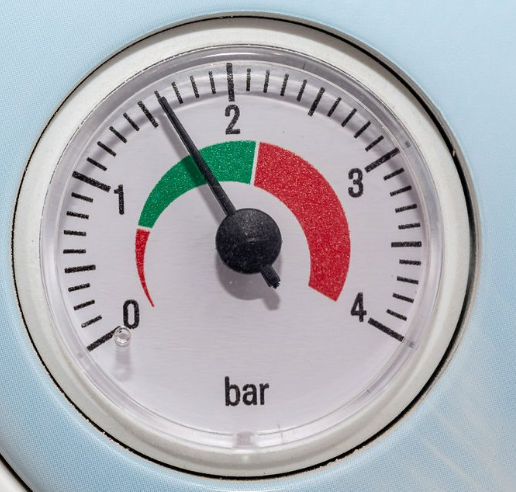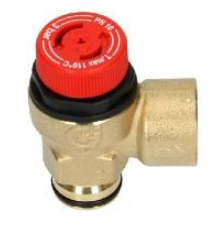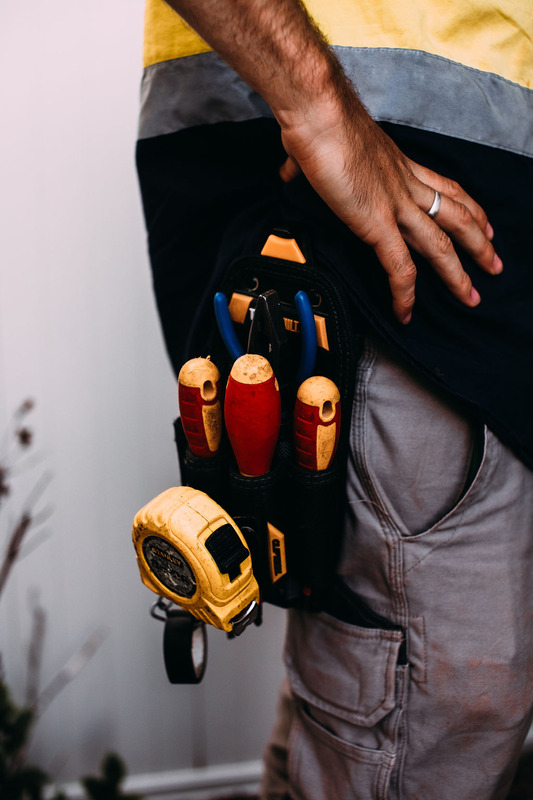Monitoring your boiler pressure is crucial to preventing heating problems. Low pressure issues are common in Worcester boilers and can lead to boiler cutoff and loss of hot water. Checking the pressure gauge regularly provides an early warning of dropping pressure.
The ideal pressure range is 1-1.5 bar when the system is cold. Repressurising through the filling loop may be needed to get the pressure back up. Understanding the causes of pressure loss and fixing any leaks prevents the issue recurring. Proper boiler pressure saves money on repairs and provides reliable heating all winter long.
In a pressurised system, steady pressure is maintained to work properly. Even when your heating system is working correctly, your Worcester boiler will lose some of its pressure over time and you may need to top it up twice a year. Boilers can often lose pressure for other reasons and this causes poor performance in providing heating and hot water.
Worcester Boiler Not Firing Up: Main Causes And Fixes
Why does my boiler keep losing pressure?
A boiler normally loses pressure once or twice a year. But a sudden pressure loss is a problem. The main causes of pressure loss are water leaks in the system. Check under the boiler and pipework for signs of leaking. A faulty pressure relief valve will also cause the boiler to keep losing pressure, check for water being discharged from the pipe outside.

What is the correct pressure for a Worcester boiler?
The correct pressure for a Worcester boiler is between 1 and 1.5 bar when the central heating is off and the radiators are cold. The green area on the pressure gauge on the front of the boiler shows you what the ideal pressure should be. It is important pressure does not climb too high when heating is on and you should know how to lower it if needed.
If your boiler pressure keeps dropping, especially when the heating is off, and you have to top it up regularly, it would indicate a bigger problem that needs to be investigated further.
Worcester boiler losing pressure but no leak
If you have checked and found no leaks, it is likely an internal boiler leak that isn’t easily spotted, but is fairly common with Worcester boilers, which can often drip into the condensate trap. Contact a qualified engineer to investigate. In the vast majority of boilers that lose pressure, the cause will be a water leak, whether that is in the pipe joints, radiator valves or radiators themselves.
Pressure dropping on boiler every day
The most common reasons for a boiler to lose pressure every day are: a big system leak, a pressure relief valve that’s been damaged by a faulty expansion vessel; and radiators that have been bled and the system has not been topped up afterward. These issues can cause a pressure loss occurring daily if not fixed in time.
Worcester Boiler Won’t Turn Off: Find Out Why And Fix
Boiler pressure drops when running hot water
When you turn on the hot water tap, the boiler diverts its focus from maintaining the central heating system to supplying hot water. As a result, the flow rate increases, and the pressure within the boiler drops momentarily. This pressure drop is usually temporary and should return to normal once the hot water demand decreases.
However, if the boiler pressure continues to drop and doesn’t recover, it may indicate a more significant issue, such as a water leak or a faulty pressure relief valve. Regular maintenance, including checking for leaks, ensuring the pressure relief valve functions correctly, and monitoring the pressure gauge, can help prevent and address potential problems with the combi boiler’s pressure when running hot water.
If you get a pressure drop when hot water is running, this is a sign of a leak. You may not see obvious signs of a leak under the boiler, or other visible parts of the heating system. The heat exchanger within the Worcester boiler could be leaking where the water drips into the condensate pipe so you don’t see any visual signs.
With all combi boilers including Worcester, when water pressure drops below 0.5 bar of pressure, a pressure sensor inside the boiler detects the change and causes the boiler to switch off. This is a precautionary measure to stop the boiler from operating without adequate levels of water which can cause it to overheat.
Is low boiler pressure dangerous?
Low boiler pressure is not dangerous but will make the boiler perform poorly. As the system loses more pressure, it will put extra strain on the boiler and you will end up paying higher bills. Over time, if the cause of the low pressure is not found and fixed, the boiler will eventually stop working altogether and refuse to start.
Click here to see which boiler installation and repair companies we recommend
Causes of pressure drop when heating is off
Leaks
Leaks in the central heating system are the most common cause of declining boiler pressure. Small leaks allow water to slowly escape from the sealed system, gradually reducing pressure over time. Leaks can occur at pipe joints, radiator connections, valve seals, and boiler components. Even minor drips can lead to low pressure issues after months of leakage.
Carefully inspect the entire system including pipe runs, boiler connections, valves and radiators to spot damp areas or drops of water indicating a leak. Fixing any identified leaks will resolve the root cause of pressure loss.
Faulty Components
Defective parts like the pressure relief valve, expansion tank diaphragm, and circulating pump seals can develop internal leaks causing low pressure. The pressure relief valve is designed to briefly open and discharge water if pressure exceeds the safe limit. However, a stuck-open relief valve will keep discharging water until pressure drops significantly.
Split diaphragms in the expansion tank prevent it from properly maintaining system pressure. Worn pump seals allow water to escape during circulation. Replacement of faulty components by a heating engineer will address these pressure-draining defects.
Limescale Buildup
Hard water areas lead to limescale accumulation in pipes, radiators, and the boiler’s heat exchanger. This limescale narrows the openings for water flow, which increases pressure. To compensate, the boiler may discharge water through the relief valve to lower pressure back to a safe level.
However, this leaves less water in the system for proper circulation and heating, resulting in low system pressure. Descaling chemicals or fitting a water softener can remove limescale deposits.
Faulty Expansion Vessel
Either it has lost charge i.e no air in it so water continues to fill the vessel without resistance, or the Schraeder valve which sits on the top or the side of the vessel, is leaking. Both these scenarios can cause a pressure drop which you may notice even when the heating is off.
Most combi boilers have the expansion vessel within the casing and you will need to call out a qualified gas engineer to take a look at it. Some Worcester combi boilers have the expansion vessel external to the casing. This makes it easier to check and charge it up but if faulty, the boiler will need to removed from the wall.
Pressure relief valve

When the system is on, pressure increases and if it reaches 3 bar the pressure relief valve will expel the pressure from the system by releasing water from it. If the PRV is faulty and cannot perform this action, when the system cools down you will notice a big drop on the pressure gauge.
You can tell if the PRV may be faulty by checking on the outside of the wall where the boiler is fitted, and looking for a 15mm copper pipe. When the central heating is on and you notice a drip here, it can indicate the PRV needs replacing.
Leaking Heat Exchanger
A cracked heat exchanger within the Worcester boiler can cause the pressure to go down. An added problem here is that the water leak goes down the condensate pipe and so isn’t noticed anywhere in the house. This is also a very expensive part that needs replacing.
Bleeding air out of radiators
If you have had to bleed air out of radiators because they weren’t getting warm, it causes the pressure to drop on your boiler gauge which you notice when the heating is off. Before turning the system back on, remember to add water back into it to raise the pressure to the correct level.
Worcester Boiler Leaking Water Underneath: What To Do
Troubleshooting Low Pressure in a Worcester Boiler
Identifying Leaks
- Visually inspect all pipes, radiators, valves and boiler connections for drips or damp spots indicating a leak.
- Use a rag to feel for moisture on joints. Leaks often leave mineral residue.
- Listen for hissing noises which can indicate escaping water.
- Check under the boiler for pooling water from internal leaks.
Fixing Leaks
- Tighten any loose joint nuts or fittings allowing water to escape.
- Drain and refill system to clear debris preventing a tight seal.
- Replace any warped washers, damaged gaskets or cracked fittings.
- Consult a heating engineer for larger leaks or inaccessible areas.
Checking for Faulty Parts
- Inspect the pressure relief valve for mineral deposits indicating discharge.
- Test expansion tank pressure and check diaphragm is intact.
- Examine pump seals for visible wear and age-related drying or cracking.
Replacing Components
- Have a heating engineer install a replacement pressure relief valve of the proper rating.
- Replace old expansion tanks or recharge pressurized diaphragm type tanks.
- A heating engineer can swap out a worn circulator pump seal kit.
Descale Deposits
- Use a chemical limescale remover approved for sealed heating systems.
- Flush loosened deposits and rinse thoroughly.
- A magnetized descaling tool can remove deposits during annual servicing.
- Install a water softener if hard water is causing heavy limescale.
What should boiler pressure be when heating is off?
The pressure gauge on a Worcester boiler will show anywhere between 1 and 2.5 bar when the heating is turned on. The upper limit will be shown on the green zone of the pressure gauge. It is important the boiler doesn’t stay over this limit. Each manufacturer sets its own upper limit but most go up to 2.5 bar.
What happens if there is no pressure in the boiler?
If there is low or no pressure in the boiler you have lost water that is needed to work efficiently. Parts in your boiler won’t be damaged by this, but the boiler has to work harder to heat the house up and provide hot water, increasing energy bills. Your boiler may not even start up until pressure has been raised.

Worcester boiler low pressure fix
- Turn off the boiler and wait until the radiators have cooled.
- Find the filling loop which is on the boiler pipework.
- Open both the filling loop valves to let water into the system. Valves are open when they are in line with the pipes.
- Close both the valves when the pressure gauge rises to between 1 and 1.5 bar. Do this by turning them back to their previous positions.
- Switch the boiler back on. Wait for 2 minutes while it goes through its startup sequence.
- Press the reset button if any fault code comes on the display.
- Keep an eye on the pressure gauge. Over the next hour check that the pressure doesn’t get low again. If it does, you will need to call an engineer to find and fix the fault.
Summary
The main causes of a boiler that keeps losing pressure are:
- Water leak in the system.
- Faulty pressure relief valve.
- Faulty expansion vessel.
- Bleeding radiators.
- Failing boiler components.
Related Articles:
